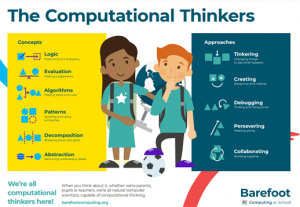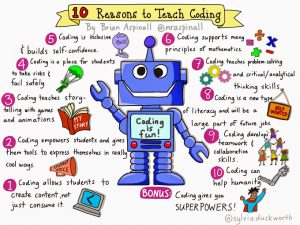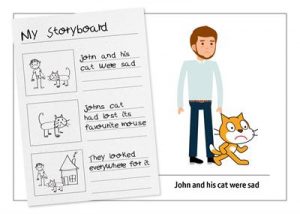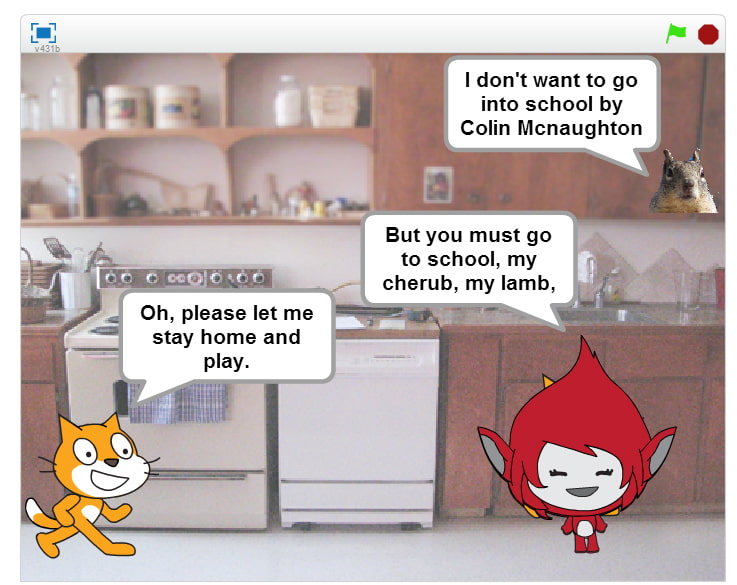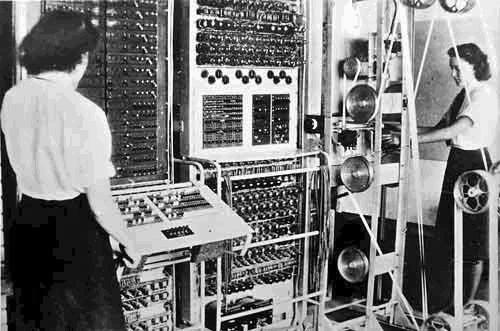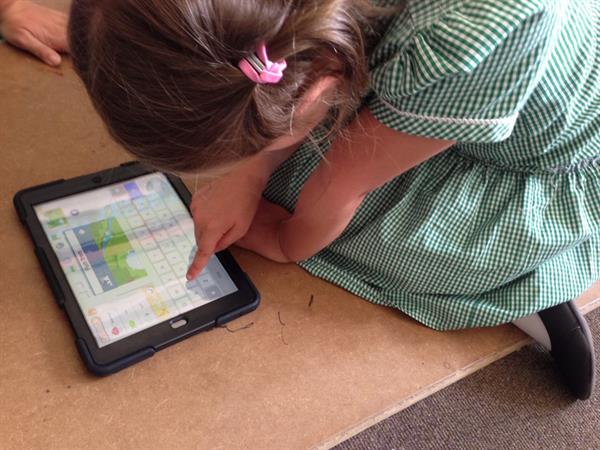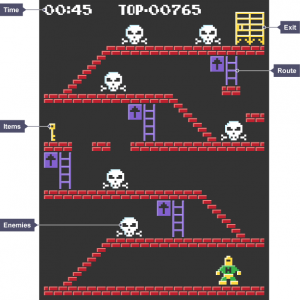Αρχική » creative / systemic thinking
Αρχείο κατηγορίας creative / systemic thinking
10 Reasons to Teach Coding – Sylvia Duckworth
- Coding allows students to create content, not just consume it.
- Coding empowers students and give them tools to express themselves in really cool ways.
- Coding teaches storytelling with games and animations.
- Coding is a place for students to take risks and fail safely.
- Coding is inclusive and builds self-confidence
- Coding supports many principles of mathematics
- Coding teaches problem solving and critical/analytical thinking skills
- Coding is a new type of literacy and will be a large part of future jobs.
- Coding develops teamwork and collaborative skills
- Coding can help humanity
Bonus: Coding gives you superpowers!
BBC Computational thinking in practice
A complex problem is one that, at first glance, we don’t know how to solve easily.
Computational thinking involves taking that complex problem and breaking it down into a series of small, more manageable problems (decomposition). Each of these smaller problems can then be looked at individually, considering how similar problems have been solved previously (pattern recognition) and focusing only on the important details, while ignoring irrelevant information (abstraction). Next, simple steps or rules to solve each of the smaller problems can be designed (algorithms).
Finally, these simple steps or rules are used to program a computer to help solve the complex problem in the best way.
Source BBC
Dimensions of Computational Thinking in COMPUT project
 When we started working on the project Computational Thinking at School, our plan was to study the following dimensions of Computational Thinking
When we started working on the project Computational Thinking at School, our plan was to study the following dimensions of Computational Thinking
- creative problem solving
- algorithmic approach to problem-solving
- problem solution transfer
- logical reasoning
- abstraction
- generalization
- representation and organization of data
- systemic thinking
- evaluation
- social impact of computation
While working on the dimensions, it proved that we had to follow a different categorization. The dimensions 1. creative problem solving, 8. systemic thinking and 10. social impact of computation are studied together with Computational Thinking and approaches to Computational Thinking. The dimensions 3. problem solution transfer and 6. Generalization were included in the new dimension pattern. A new dimension, decomposition was added.
The dimensions of Computational Thinking that will be studied are the following
- algorithms
- pattern
- logical reasoning
- abstraction
- decomposition
- evaluation
The categorization follows Barefoot Computing at school
BBC Examples of creative problem solving
Thinking computationally
Being able to turn a complex problem into one we can easily understand is a skill that is extremely useful. In fact, it’s a skill you already have and probably use every day.
For example, it might be that you need to decide what to do with your group of friends. If all of you like different things, you would need to decide:
- what you could do
- where you could go
- who wants to do what
- what you have previously done that has been a success in the past
- how much money you have and the cost of any of the options
- what the weather might be doing
- how much time you have
From this information, you and your friends could decide more easily where to go and what to do – in order to keep most of your friends happy. You could also use a computer to help you to collect and analyse the data to devise the best solution to the problem, both now and if it arose again in the future, if you wished.
Another example might occur when playing a videogame. Depending on the game, in order to complete a level you would need to know:
- what items you need to collect, how you can collect them, and how long you have in which to collect them
- where the exit is and the best route to reach it in the quickest time possible
- what kinds of enemies there are and their weak points
From these details you can work out a strategy for completing the level in the most efficient way.
If you were to create your own computer game, these are exactly the types of questions you would need to think about and answer before you were able to program your game.
Both of the above are examples of where computational thinking has been used to solve a complex problem:
- each complex problem was broken down into several small decisions and steps (eg where to go, how to complete the level – decomposition)
- only the relevant details were focused on (eg weather, location of exit – abstraction)
- knowledge of previous similar problems was used (pattern recognition)
- to work out a step by step plan of action (algorithms)
Source BBC

